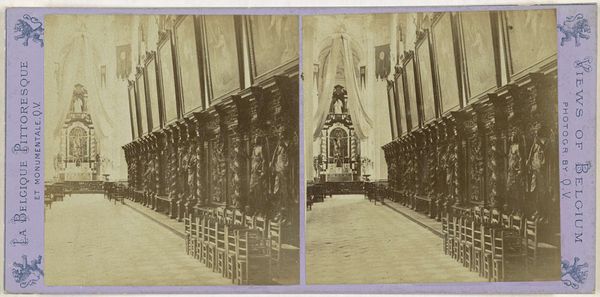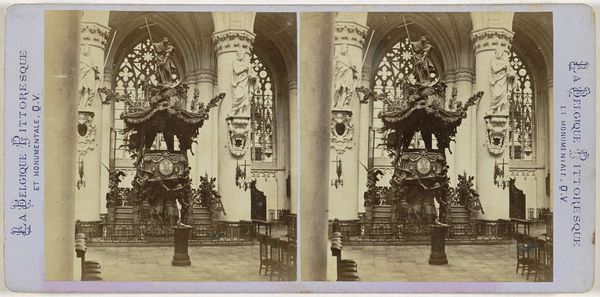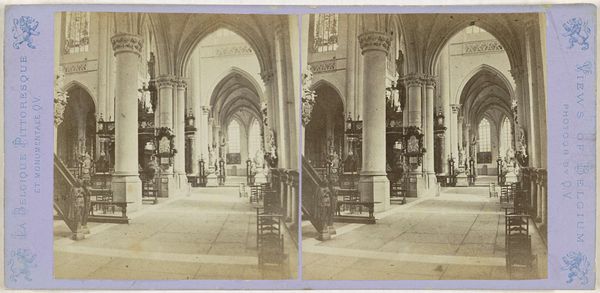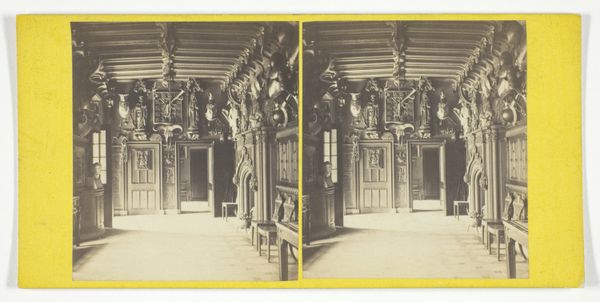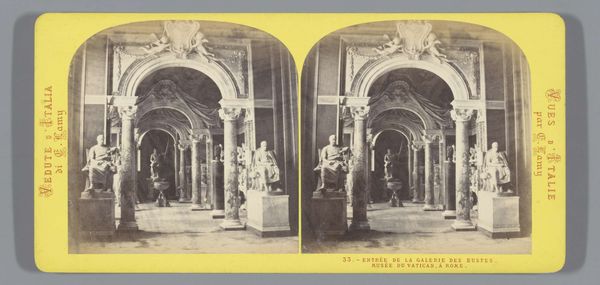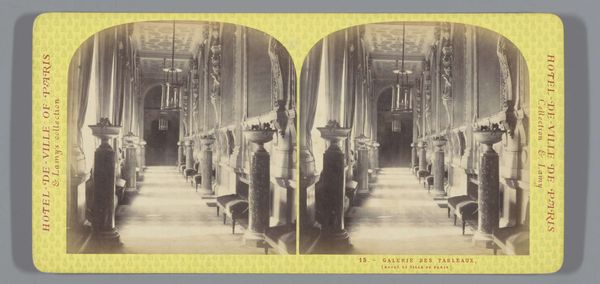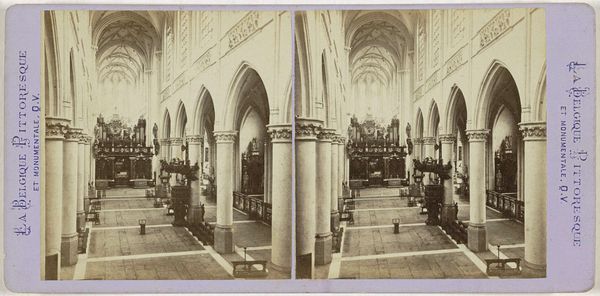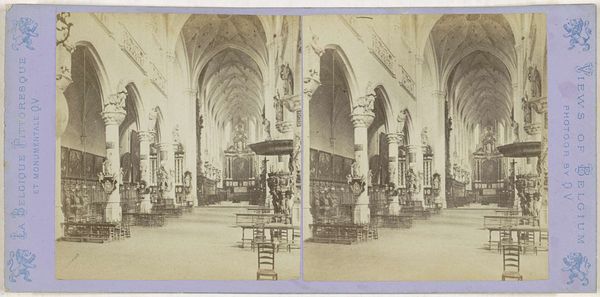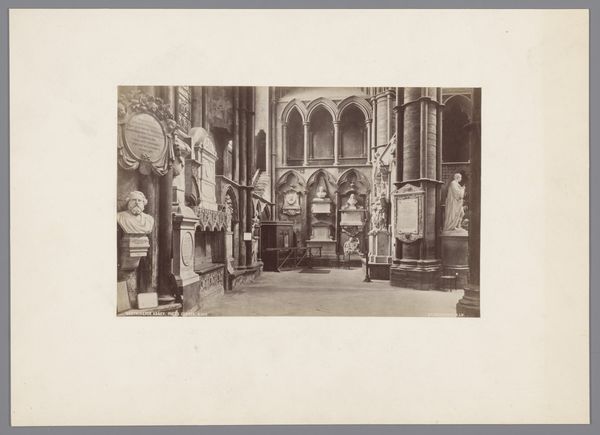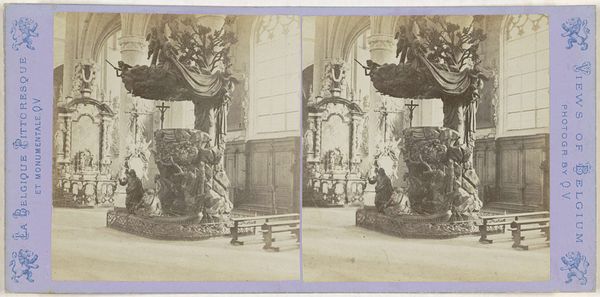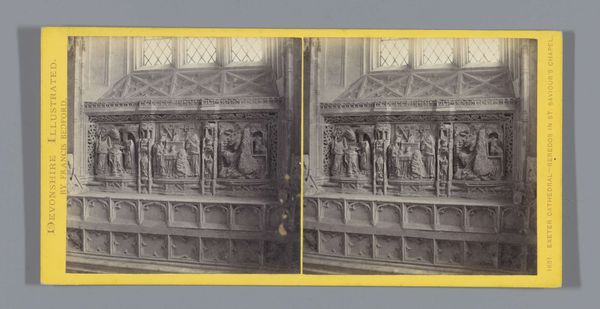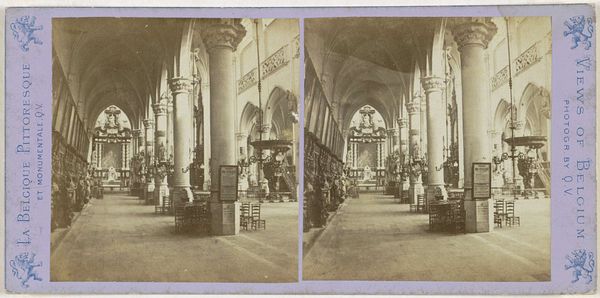
Biechtstoelen in de zijbeuken van de Sint-Pauluskerk in Antwerpen 1866 - 1870
0:00
0:00
photography, gelatin-silver-print
#
landscape
#
photography
#
coloured pencil
#
gelatin-silver-print
#
realism
Dimensions: height 85 mm, width 175 mm
Copyright: Rijks Museum: Open Domain
Editor: This photograph, taken by Jules Hippolyte Quéval between 1866 and 1870, showcases the confessionals in the side aisles of St. Paul's Church in Antwerp. The intricate carvings along the walls are quite striking! How do you interpret this work, especially considering it's a photograph of a space meant for private religious practice? Curator: For me, it is fascinating to examine the photograph itself as a commodity, produced and circulated. The gelatin-silver print captures not only the church's interior but also the ambition to disseminate its image widely. The photographic process itself became a means of replicating and marketing religious spaces to a broader audience. Consider who would have bought this? Editor: That's interesting – I hadn't thought about the market for religious imagery at that time. Would this have been seen as a form of religious tourism, bringing the church to those who couldn't physically visit? Curator: Precisely! And look at the photograph's border - the very words, "La Belgique Pittoresque et Monumentale", are printed there! Furthermore, examine the labor involved in creating both the confessionals, and the subsequent documentation. What does the mechanical reproduction of the sacred interior accomplish, and for whom? Editor: I suppose it democratizes access while simultaneously transforming a spiritual space into a marketable object, created by labour and designed to feed a kind of consumption, in which religious buildings became tourist destinations. Curator: Indeed. This image allows us to examine the complex interplay between religious institutions, labor, photographic technology, and emerging consumer markets in 19th-century Belgium. Editor: I see what you mean. Thinking about the materiality and production of the photograph really changes my understanding of its purpose. Thanks!
Comments
No comments
Be the first to comment and join the conversation on the ultimate creative platform.
